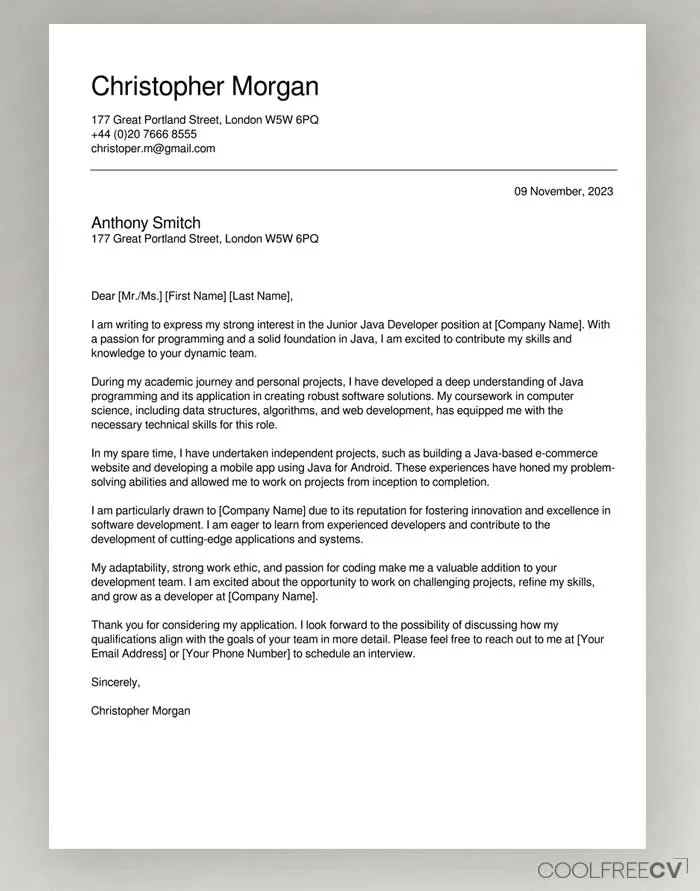In the competitive world of job hunting, a well-crafted cover letter can be the key to unlocking your dream job. More than just a formality, your cover letter is your chance to make a strong first impression, showcase your personality, and demonstrate why you’re the perfect fit for the role. This guide will help you ace your job hunt by teaching you how to write the perfect cover letter, increasing your chances of getting noticed by employers and landing an interview. We’ll delve into the essential components, formatting tips, and examples to ensure your cover letter stands out from the crowd.
The Purpose of a Cover Letter
Understanding the purpose of a cover letter is the first step in crafting an effective one. It’s not merely a repetition of your resume; instead, it serves as a personalized introduction to the hiring manager. Think of it as your opportunity to highlight your most relevant skills, experiences, and achievements in a way that directly relates to the specific job you’re applying for. It’s a chance to demonstrate your enthusiasm for the role and the company, and to make a memorable first impression.
Why a Cover Letter Matters
A cover letter provides context to your resume. It helps the hiring manager understand your career goals and how your past experiences have prepared you for the role. By using a cover letter, you can connect the dots between your skills and the job requirements. It also allows you to address any potential gaps in your resume, such as career changes or periods of unemployment, and to explain your perspective on them. In a world of automated applicant tracking systems (ATS), a well-written cover letter can set you apart, demonstrating your genuine interest and making you a more appealing candidate.
When to Skip a Cover Letter
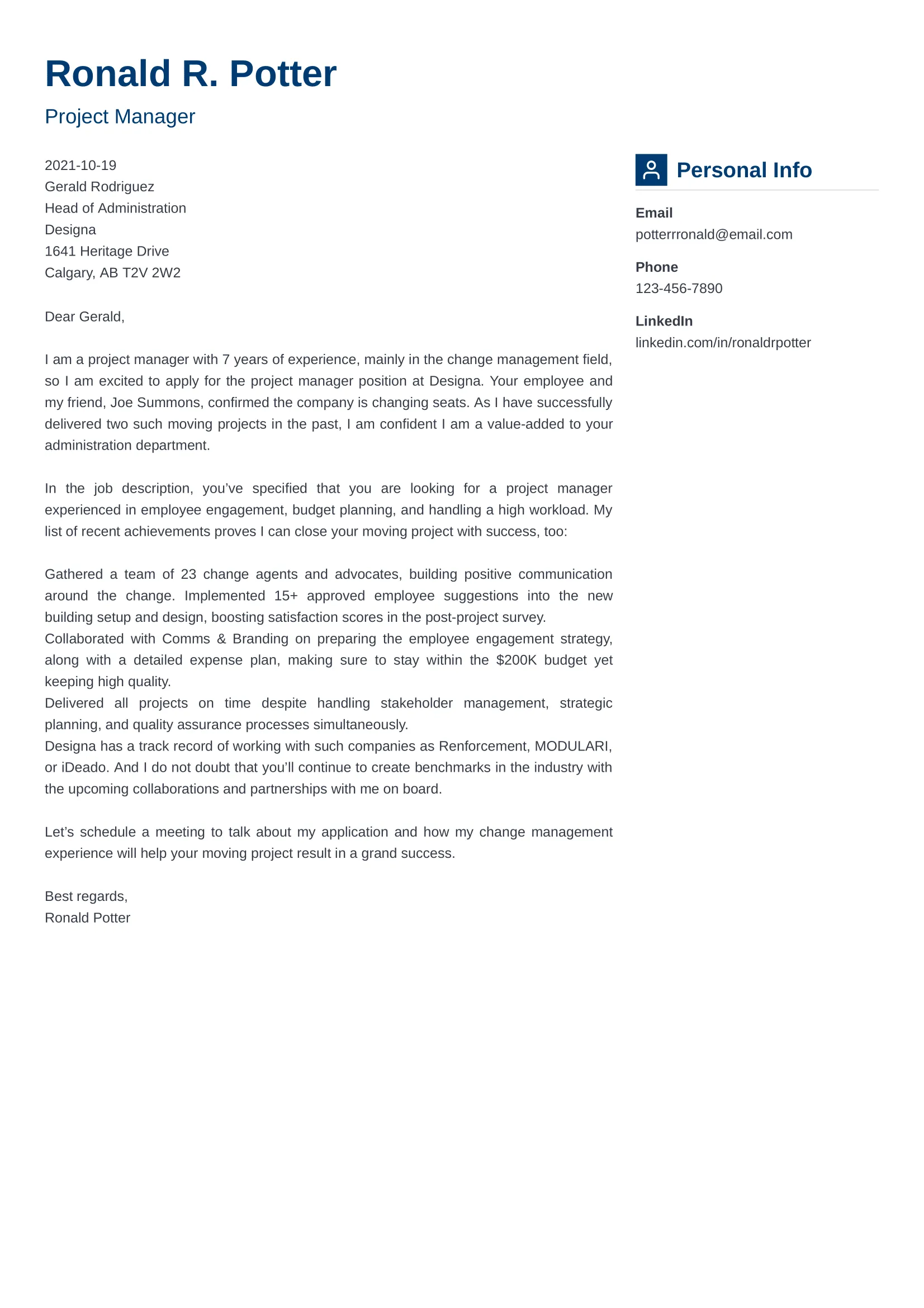
Although cover letters are often necessary, there are some situations where they might not be required. If the job application specifically states that a cover letter is optional, it may be possible to skip it. However, in almost all cases, submitting one can only help you. If you are applying through a very generic application process where the form is your only way to provide information, a cover letter may not be an option. Always review the job posting instructions carefully to understand the employer’s expectations.
Key Elements of a Cover Letter
A well-structured cover letter comprises several key elements that work together to present you as the ideal candidate. These elements include your contact information, the hiring manager’s details, a compelling opening, the body where you highlight your skills and experience, an expression of enthusiasm and interest, and a call to action. Each section plays a vital role in telling your story, demonstrating your capabilities, and persuading the hiring manager to invite you for an interview. Use the image below as a header image of your letter.
Your Contact Information and Date
At the top of your cover letter, include your full name, address, phone number, and professional email address. Ensure your email address is appropriate and professional; avoid using nicknames or casual addresses. Directly below your contact information, add the date. This helps the hiring manager quickly identify when the letter was written and ensures it’s current.
The Hiring Manager’s Information
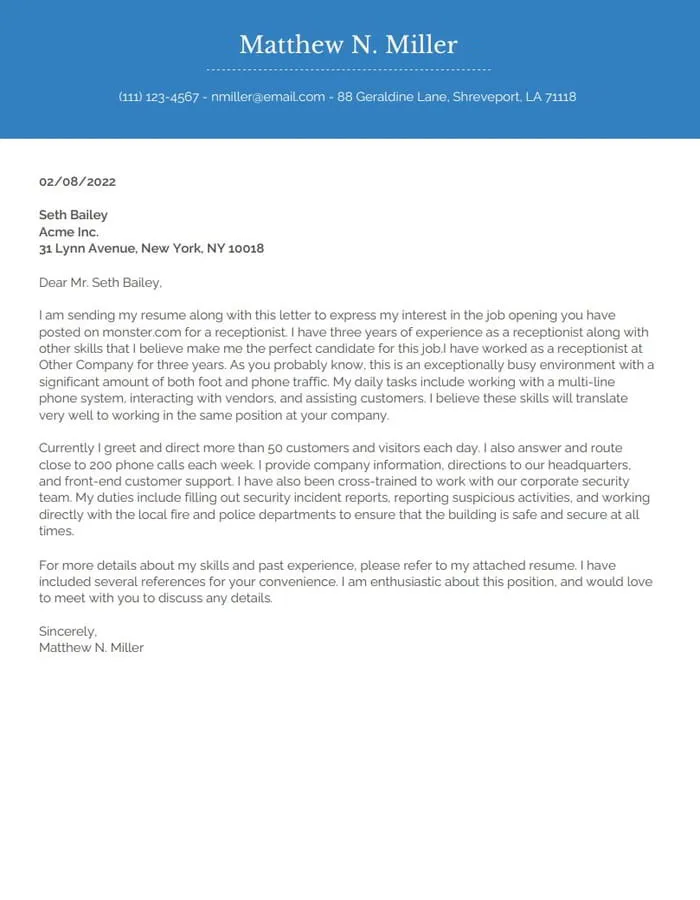
Address your cover letter to a specific person whenever possible. Research the hiring manager’s name and title using LinkedIn or the company website. If you can’t find a specific name, use a professional greeting such as “Dear Hiring Manager.” Always avoid generic greetings like “To Whom It May Concern.” This shows that you’ve taken the time to personalize your application and demonstrates your attention to detail.
Crafting a Compelling Opening
The opening paragraph is your chance to grab the reader’s attention. Start with a strong opening that introduces who you are and the role you are applying for. Mention how you found the job and express your interest in the position. This section should immediately capture the hiring manager’s attention and make them want to continue reading. Show genuine enthusiasm for the opportunity. The goal is to make a positive first impression and set the tone for the rest of the letter.
Highlighting Your Skills and Experience
The body of your cover letter is where you showcase your relevant skills and experience. Focus on the requirements listed in the job description and explain how your qualifications align with them. Provide specific examples that demonstrate your accomplishments and how you have previously contributed to a similar role or project. Use action verbs to describe your achievements, and quantify your successes whenever possible. This section must show the hiring manager how your skills meet the company’s needs.
Tailoring Your Cover Letter to the Job
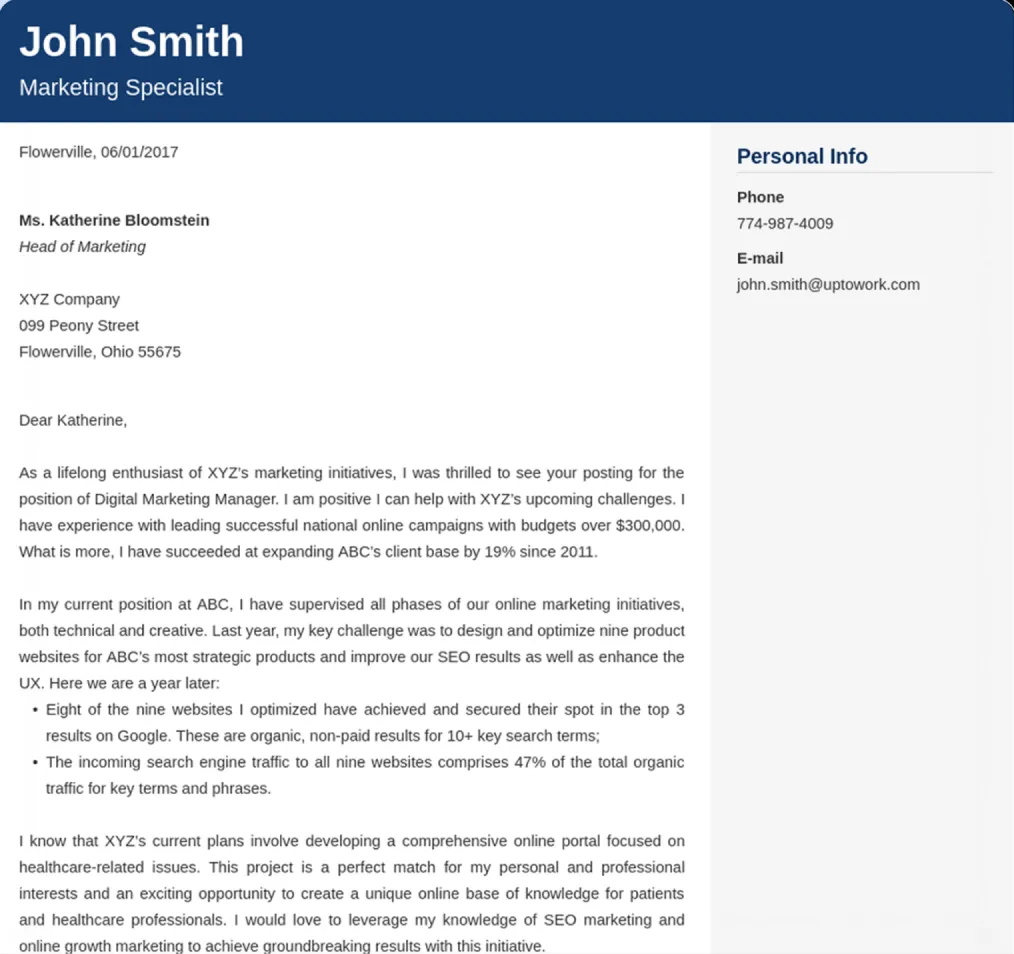
Customize your cover letter for each job application. Don’t use a generic template; instead, read the job description carefully and identify the key requirements. Then, highlight the skills and experiences that best match those requirements. This shows the employer that you have taken the time to understand their needs and that you are genuinely interested in the role. Tailoring increases your chances of getting selected because it demonstrates your attention to detail and your understanding of the role.
Quantifying Your Achievements
Whenever possible, use numbers and data to quantify your achievements. Instead of saying you “increased sales,” say you “increased sales by 15% in one quarter.” This gives the hiring manager a clear understanding of your impact and the value you can bring to the company. Quantifiable results make your achievements more credible and help you stand out from other candidates. It shows that you have a record of success and can deliver measurable results.
Expressing Enthusiasm and Interest
Show genuine enthusiasm for the company and the role. Explain why you are interested in the specific position and what attracts you to the company. This could include the company’s mission, values, or culture. Demonstrating your interest makes you appear more committed and shows the employer that you’re not just looking for any job but are genuinely excited about the opportunity. Reference something specific about the company or the role that resonates with you to make it more personal and impactful.
Ending with a Call to Action
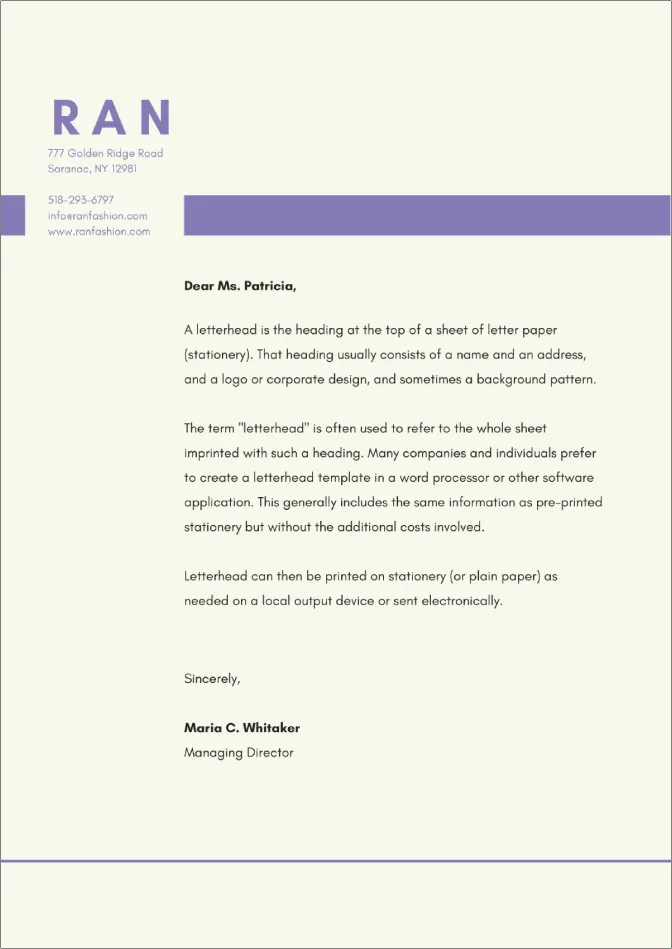
Conclude your cover letter with a clear call to action. Thank the hiring manager for their time and consideration, and state that you look forward to hearing from them soon. Reiterate your interest in the position and express your availability for an interview. Include your phone number and email address again to make it easy for the hiring manager to contact you. A call to action encourages the hiring manager to move forward with your application and increases your chances of getting the interview.
Cover Letter Formatting and Design
The visual appearance of your cover letter is as important as its content. Proper formatting and design make your letter easy to read and create a professional impression. A well-formatted cover letter demonstrates your attention to detail and your ability to present information clearly. Poor formatting, on the other hand, can distract the hiring manager and undermine the effectiveness of your application. Pay attention to the following key elements to ensure your cover letter looks polished and professional.
Font Selection
Choose a clean and readable font, such as Times New Roman, Arial, or Calibri. Ensure the font size is between 10 and 12 points to make it easy to read. Avoid using overly decorative or unusual fonts, as they can be distracting. The goal is to present your content clearly and professionally, so stick to fonts that are widely accepted and easy on the eyes. A consistent font throughout your letter adds to its overall professionalism.
Margins and Spacing
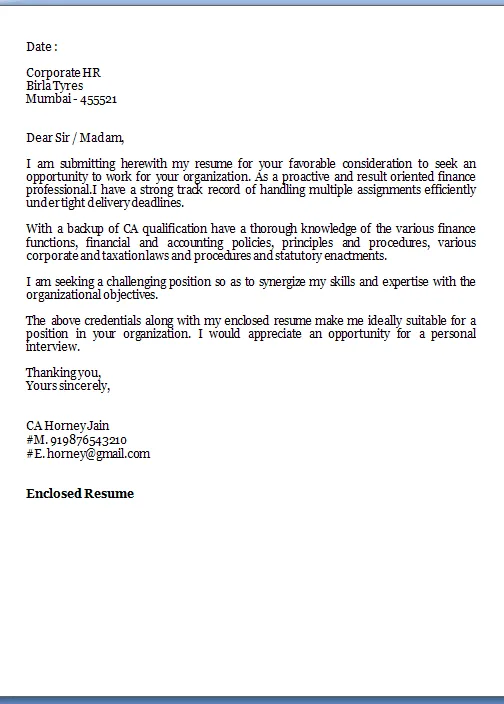
Use standard one-inch margins on all sides of your cover letter. Use single-spaced lines within paragraphs and double-space between paragraphs. Proper spacing and margins make your letter look organized and easy to scan. Avoid overcrowding your text, as it can make the letter appear dense and difficult to read. Adequate spacing provides visual breaks that allow the reader to absorb information more efficiently and gives your letter a clean and professional look.
Proofreading and Editing
Proofread your cover letter carefully for any errors in grammar, spelling, and punctuation. Ask a friend or family member to review your letter as well. Even minor errors can create a negative impression and detract from your professionalism. Ensure your language is clear, concise, and free of jargon. Accurate spelling and grammar demonstrate your attention to detail and your ability to communicate effectively. A final review by someone else can catch mistakes you might have missed.
Cover Letter Examples
Reviewing examples of cover letters for various situations can provide valuable insights and guidance. Tailor your cover letter based on your experience level and the type of job you are applying for. These samples will offer a clear understanding of the format, tone, and content.
Cover Letter for Entry-Level Positions
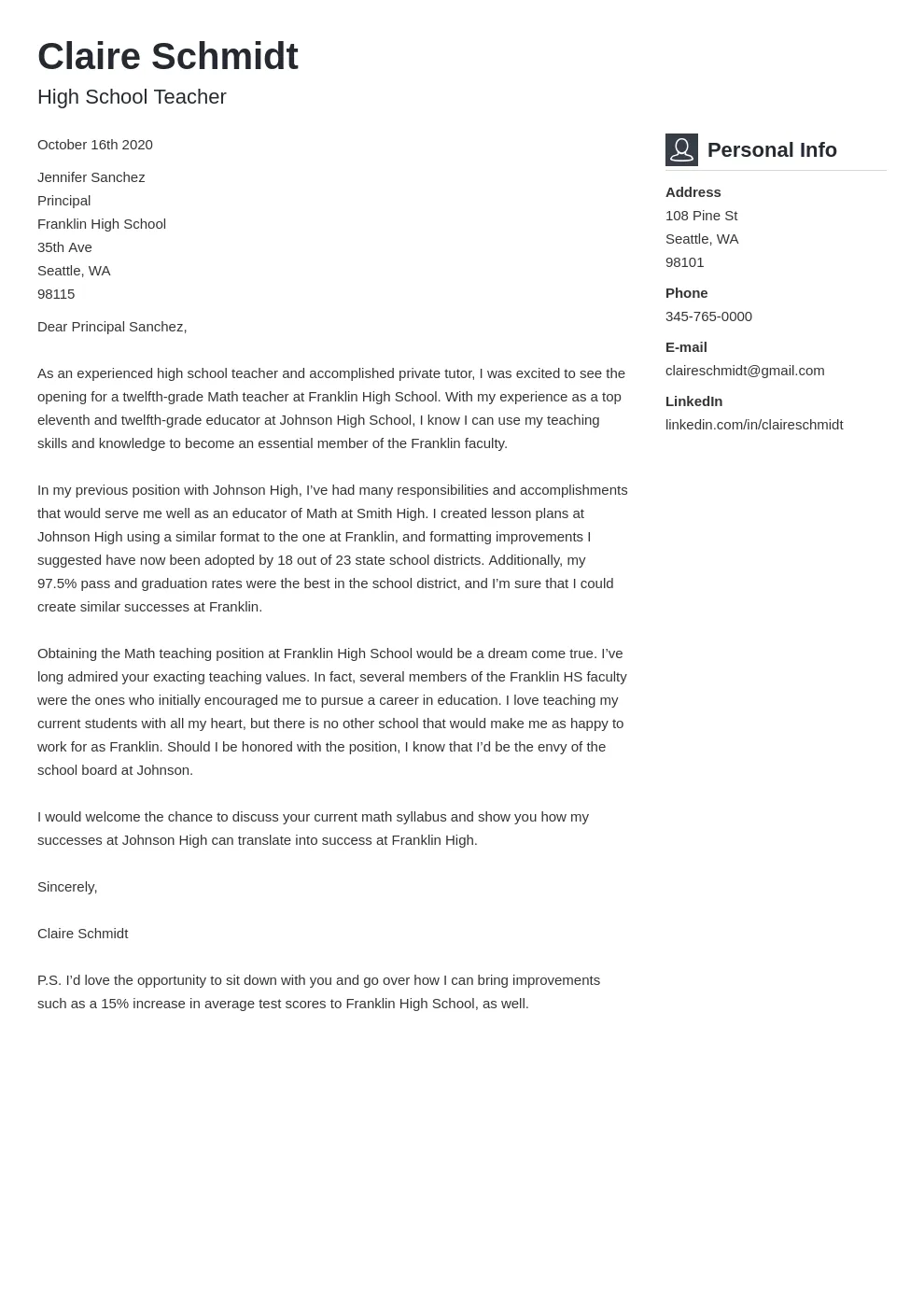
When applying for entry-level positions, highlight your educational background, relevant coursework, internships, volunteer experiences, and any skills you’ve gained through extracurricular activities. Show your enthusiasm and willingness to learn. Focus on your transferable skills, such as communication, teamwork, and problem-solving, and how they align with the job requirements. This allows you to demonstrate your potential to contribute and shows you’re a strong candidate, even with limited professional experience.
Cover Letter for Experienced Professionals
For experienced professionals, focus on your proven track record, specific achievements, and how you have contributed to previous employers. Quantify your accomplishments whenever possible, and highlight your leadership skills, expertise, and industry knowledge. Connect your past experiences to the job requirements and showcase how you can solve problems and add value to the company. Demonstrate your ability to quickly adapt and succeed in the new role by demonstrating the value of your experience.
Cover Letter for a Career Change
When making a career change, address any gaps in your experience by emphasizing your transferable skills and how your previous experiences relate to the new role. Explain your reasons for the career change and highlight your passion for the new field. Focus on the skills and experiences you have that are relevant, and show your willingness to learn and adapt. Show your enthusiasm and your plans to succeed in the new role through self-education or any other related activities.
By following these tips, you can create a cover letter that impresses potential employers and increases your chances of landing an interview. Remember to tailor each letter to the specific job you are applying for and always proofread carefully. Good luck with your job search!
